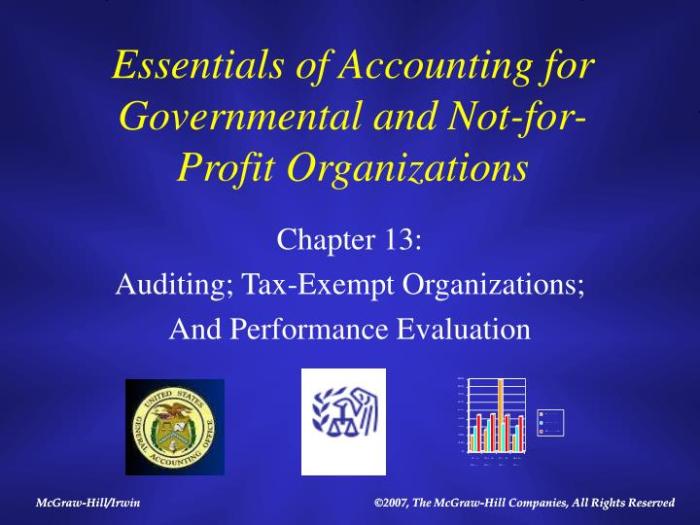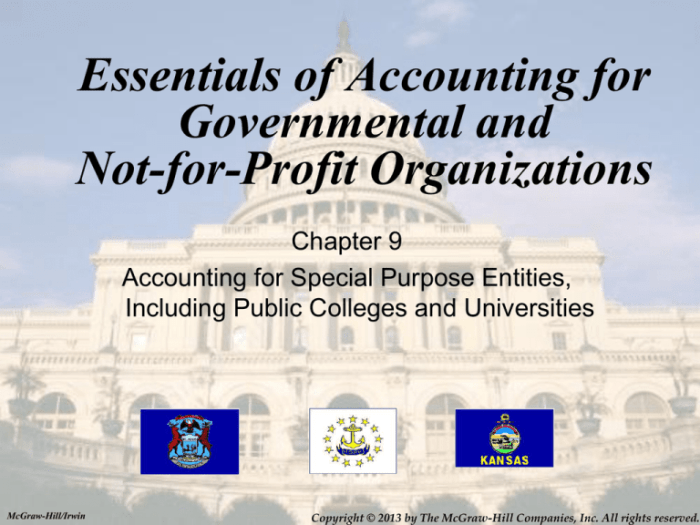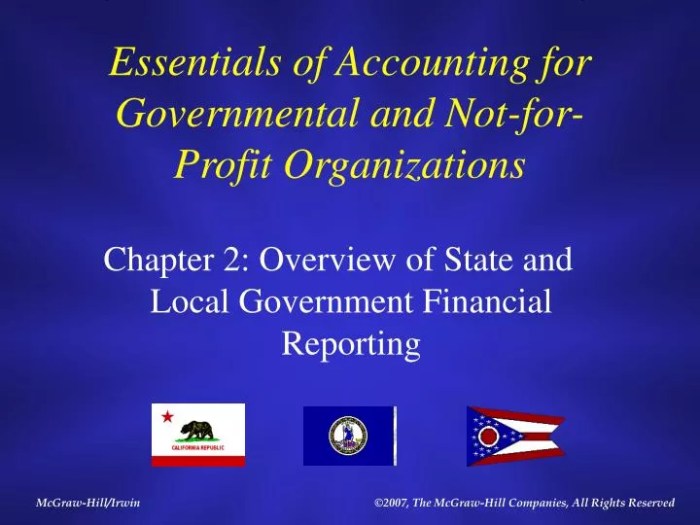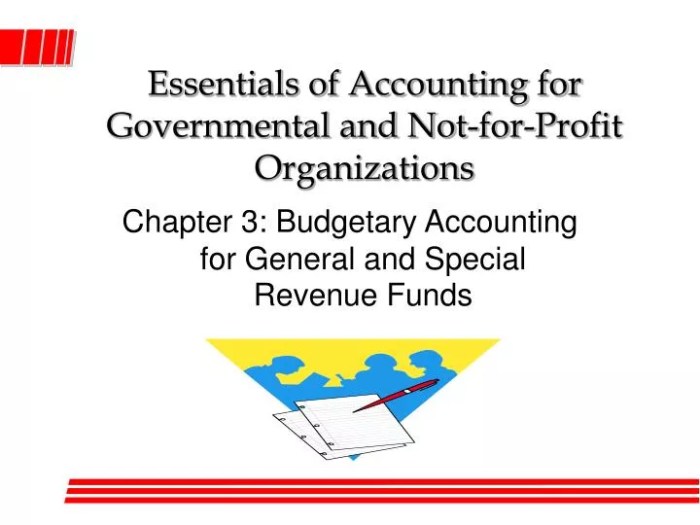Essentials of accounting for governmental and not for profit organizations – Essentials of accounting for governmental and not-for-profit organizations presents a unique set of principles and standards that govern the financial reporting of these entities. This comprehensive overview explores the distinct accounting practices, challenges, and opportunities faced by governmental and not-for-profit accountants, providing valuable insights for stakeholders and practitioners alike.
Understanding the essential principles of governmental accounting, including fund accounting and modified accrual basis, is crucial for ensuring transparency, accountability, and compliance in financial reporting. Similarly, not-for-profit organizations adhere to distinct accounting principles, such as the accrual basis and mission-related activities, which impact their financial statements.
Essential Principles of Governmental Accounting

Governmental accounting adheres to unique principles and standards, including fund accounting and modified accrual basis. These principles emphasize transparency, accountability, and compliance to ensure the proper stewardship of public funds.
Fund Accounting
- Separates financial resources into distinct funds based on their intended use.
- Allows for better control and accountability over the use of public money.
Modified Accrual Basis
- Recognizes revenues when they are earned, regardless of receipt, and expenses when they are incurred, regardless of payment.
- Provides a more accurate picture of an entity’s financial position and performance.
Essential Principles of Not-for-Profit Accounting

Not-for-profit organizations follow distinct accounting principles that emphasize mission-related activities and the accrual basis.
Accrual Basis
- Recognizes revenues and expenses when they are earned and incurred, regardless of cash flow.
- Provides a more accurate view of the organization’s financial performance.
Mission-Related Activities, Essentials of accounting for governmental and not for profit organizations
- Focuses on accounting for activities that directly contribute to the organization’s mission.
- Ensures that financial resources are used for the intended purposes.
Differences and Similarities between Governmental and Not-for-Profit Accounting: Essentials Of Accounting For Governmental And Not For Profit Organizations

| Governmental Accounting | Not-for-Profit Accounting | |
|---|---|---|
| Fund Accounting | Required | Not required |
| Modified Accrual Basis | Required | Not required |
| Mission-Related Activities | Not emphasized | Emphasized |
| Purpose | Stewardship of public funds | Mission-related activities |
| Regulatory Environment | Highly regulated | Less regulated |
Challenges and Opportunities in Governmental and Not-for-Profit Accounting

Challenges
- Regulatory compliance
- Resource constraints
- Public scrutiny
Opportunities
- Improve accounting practices
- Enhance transparency
- Increase public trust
Query Resolution
What is the primary difference between governmental and not-for-profit accounting?
Governmental accounting focuses on compliance with legal and regulatory requirements, while not-for-profit accounting emphasizes mission-related activities and donor restrictions.
How does fund accounting impact governmental financial reporting?
Fund accounting separates financial resources into distinct funds, ensuring that resources are used for their intended purposes and enhancing accountability.
What is the role of restricted funds in not-for-profit accounting?
Restricted funds represent resources that can only be used for specific purposes, requiring separate tracking and reporting to ensure compliance with donor intentions.